Teaching the numbers
8 Tips on How to Teach Numbers to Kindergarten
Understanding numbers is an important skill that kindergartners need to master. Children encounter and observe various concepts of mathematics since infancy, such as quantity comparison and pattern recognition. Once children reach preschool age, you can start teaching them numbers in a fun and interactive way.
Video: How to Teach Numbers to Preschool Kids
Teaching numbers to children is simple. Parents can motivate them to relate numbers with activities they perform on a daily basis. However, they will only begin to truly comprehend the meaning of numbers until they are around five years old.
When to Teach Numbers to a Child?
It is a great idea to start introducing numbers to your child after she turns one. You can start with number rhymes, like ‘One, Two, Buckle My Shoe’, ‘Ten Green Bottles,’ or 1,2,3,4,5, Once I caught a fish alive’. You can also point out simple objects or things they encounter in their daily lives, such as one apple, two dogs, three chocolates, and so on. You can make learning numbers playful and enjoyable for your child.
How to Teach Numbers to Preschoolers
Here are some tips that will help you teach numbers to preschoolers:
1. Teach Counting with Number Rhymes
Using rhymes and songs is a fun way of learning numbers for kindergartners. You can use number songs and rhymes like ‘10 Little Monkeys Jumping on the Bed’, ‘This Old Man – He played One’, ‘The Ants Are Marching One by One Hurrah,’ etc. to teach kids about numbers in an immensely enjoyable manner. Show the numbers on your fingers as you sing together with your child so that the child knows that a particular number relates to that many fingers.
2. Incorporate Numbers into Daily Tasks
Use numbers in daily tasks that your child does with you.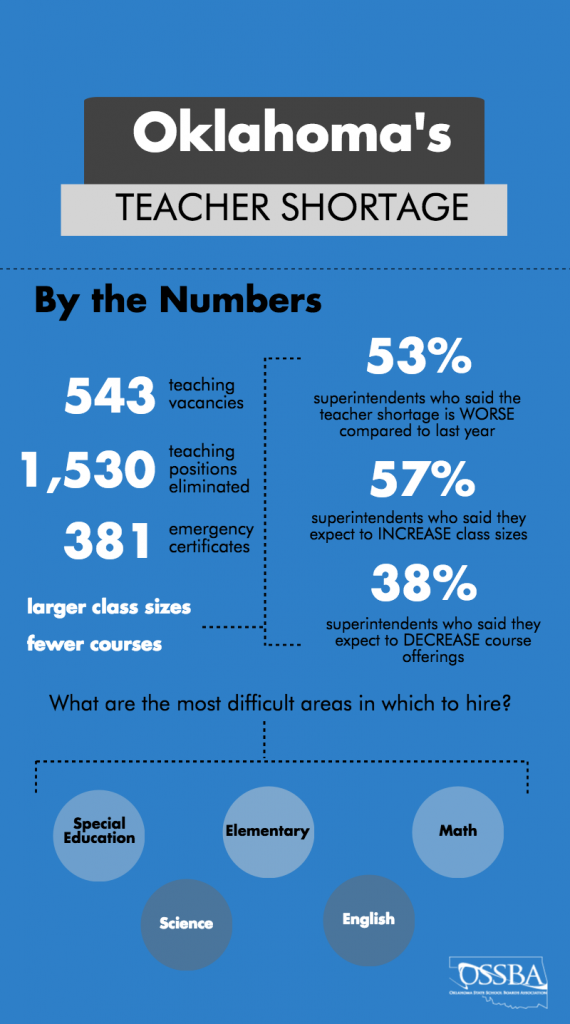 For example, ask your child to help set the table and place one fork or two spoons with each plate. You could also get her to count peas or apples, thus connecting numbers with quantities. Another idea is that you can encourage her to count her toys as they help you put them away after playing.
For example, ask your child to help set the table and place one fork or two spoons with each plate. You could also get her to count peas or apples, thus connecting numbers with quantities. Another idea is that you can encourage her to count her toys as they help you put them away after playing.
3. Play Number Games with a Group of Kids
Kids learn better when they are playing with each other. You can encourage some healthy competition in the group to motivate them, too. Get them to sit in a circle and take turns counting numbers.
4. Write Down Numbers and Make the Child Draw that Quantity
Write down numbers in a drawing book and have your child draw something that denotes that quantity. For example, write 3 and ask her to draw three flowers. For 4, you could ask the child to draw four ice cream cones. You can also do the opposite of this by drawing several quantities of an object and asking your child to count them and tell you the number.
5. Point Out Numbers on Ad Boards and Vehicles
When you go out with your child, you can point out numbers on ad boards or vehicles and thus help her recognise the numbers by sight.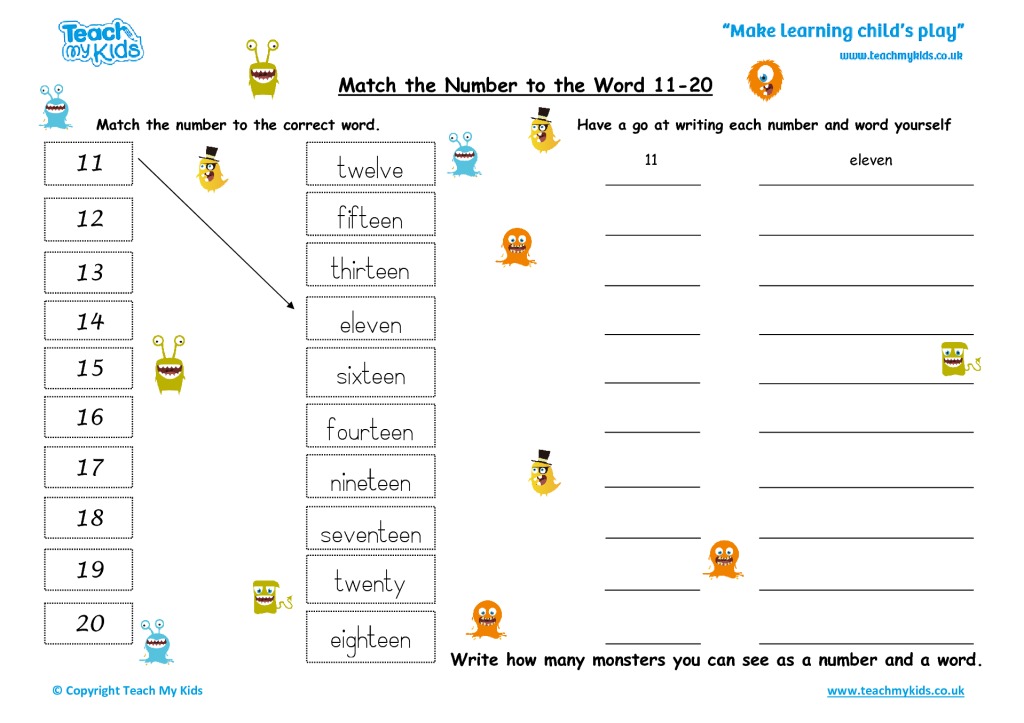 This will be helpful later on when your child begins writing numbers.
This will be helpful later on when your child begins writing numbers.
6. Teach the Order of Numbers with Connect the Dots
This game teaches kids the order of numbers. Use a chalkboard to form a shape with numbered dots. Next, help your child connect the dots to draw that shape. For example, you could use 8 dots to make an octagon shape and help your child draw an octagon. You can also buy connect-the-dots books, which have numerous drawings outlined by numbered dots. These dots need to be connected sequentially to draw the shape. Once the shape is drawn, let your child colour the shape to make the game more fun.
7. Count Fingers and Toes
Counting fingers and toes is a great way to introduce pre-schoolers to numbers. You could make them count the fingers on each hand and ask them to compare the number of fingers on each hand. You can also ask them how many big toes they have or how many little fingers they have.
8. Make and Use Flash Cards
Make flash cards with numbers zero to nine and use these to play various number games with your child. For example, you could place the numbers in a random order and help your child arrange them in the correct sequence.
For example, you could place the numbers in a random order and help your child arrange them in the correct sequence.
Children are quick learners, and they can grasp concepts with ease. Introducing numbers to kindergartners in a fun way will help them understand numbers easily. Pre-schoolers tend to memorise numbers. However, they will gradually begin to understand what the numbers mean when you relate the quantity of everyday objects to the numbers. Each child is unique and learns at her own pace. Therefore, it is advisable to avoid comparing the learning abilities of different children.
Also Read: How to Teach English to Kids
5 Tips on How to Teach Numbers to Kids in Kindergarten
One of the first lessons we learn as kids is how to count numbers. Opening the door to mathematics, learning numbers is a crucial skill to master in the earliest years of education.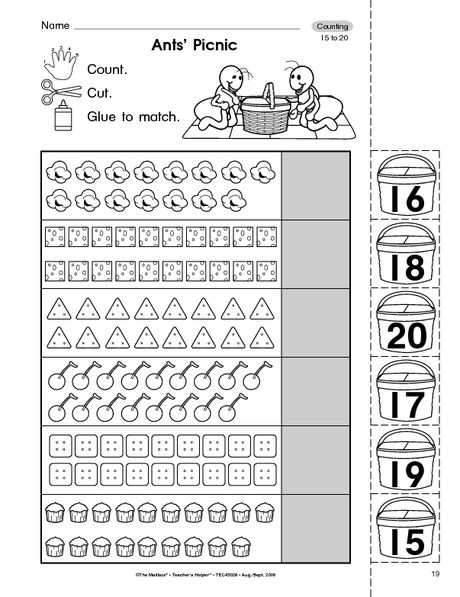
When teaching numbers, many strategies can help kids feel confident in counting independently. It’s not only important to establish the ability to count. Building an understanding of the numbers will help kids develop math skills in the future. Teaching numbers doesn’t have to be a daunting task. With a patient approach and an engaging lesson plan, you will soon have your kids excited to count!
When Should Kids Start to Learn Numbers?
Children are exposed to numbers at the very beginning of their lives, whether that be with pattern recognition or the ability to discern quantity amounts. That being said, children can begin learning their numbers as early as preschool. Since math is all around us every day, there are many opportunities to encourage number retention among kids who are not confident with their numbers.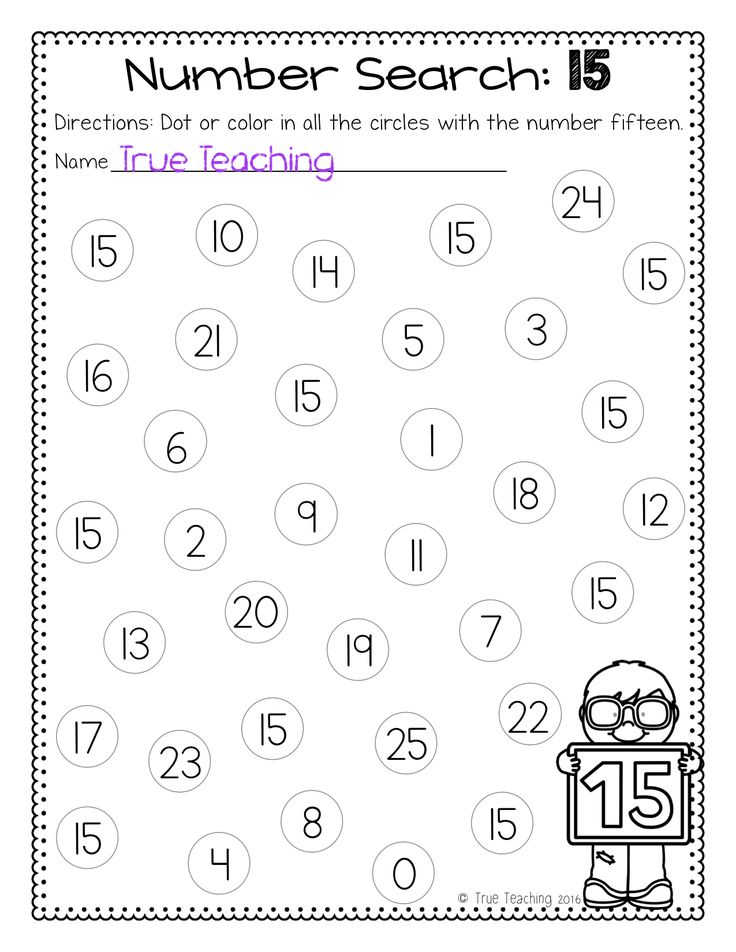
5 Tips for Teaching Numbers
At Learning Without Tears, we know that there are numerous strategies for teaching numbers to young children. We believe that with a proper plan in place, every child can feel confident about their knowledge of numbers. Consider Learning Without Tears’ top five tips for teaching numbers to set your little ones up for success in mathematics.
1. Begin with Number Formation
There are only ten characters that you need to teach or remediate (0-9). Think about that, just 10.
Many of our children have names with more than 10 characters, especially when you consider writing their first and last name. It is much easier to teach ten numbers instead of 26 lowercase letters and 26 uppercase or capital letters.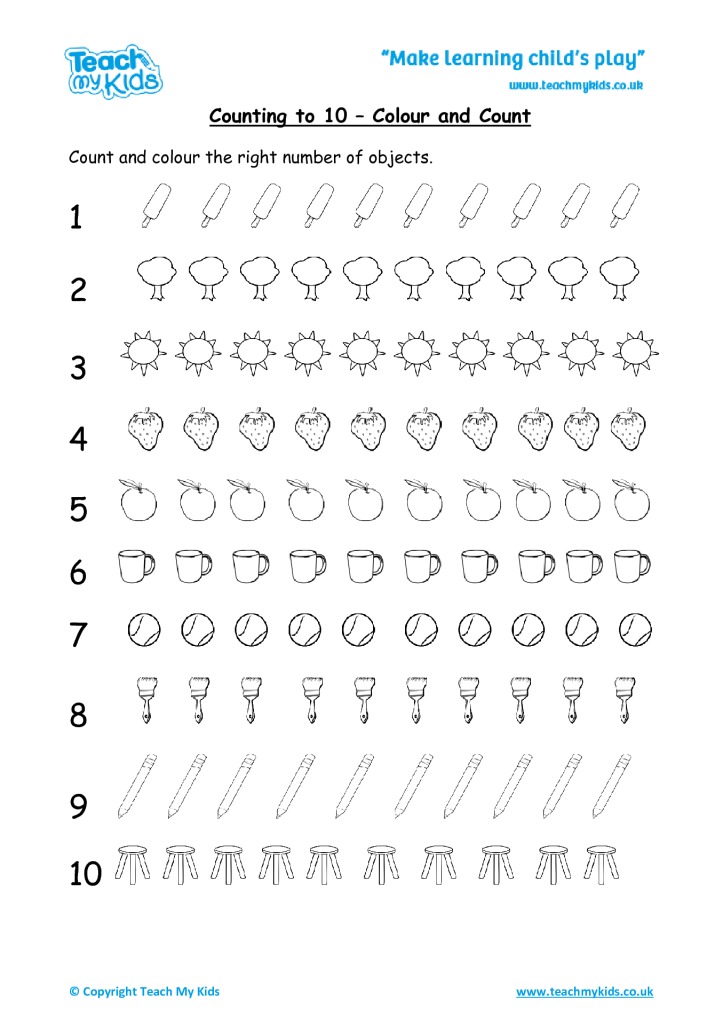 Also, numbers do not come in lowercase and uppercase. They are just one size. This makes teaching numbers for the first time or remediating numbers very easy as they are all made of the same size.
Also, numbers do not come in lowercase and uppercase. They are just one size. This makes teaching numbers for the first time or remediating numbers very easy as they are all made of the same size.
Click here to download a free copy of our Number Formation Chart.
2. Start at the Top with Numbers
So many children struggle with where to start letters or numbers when they are writing. They generally form letters and numbers inconsistently, sometimes starting at the top, the next time starting at the bottom, and the next time maybe starting in the middle. The results of these inconsistent start patterns and habits are usually letters or numbers that are poorly formed and difficult to recognize or to read.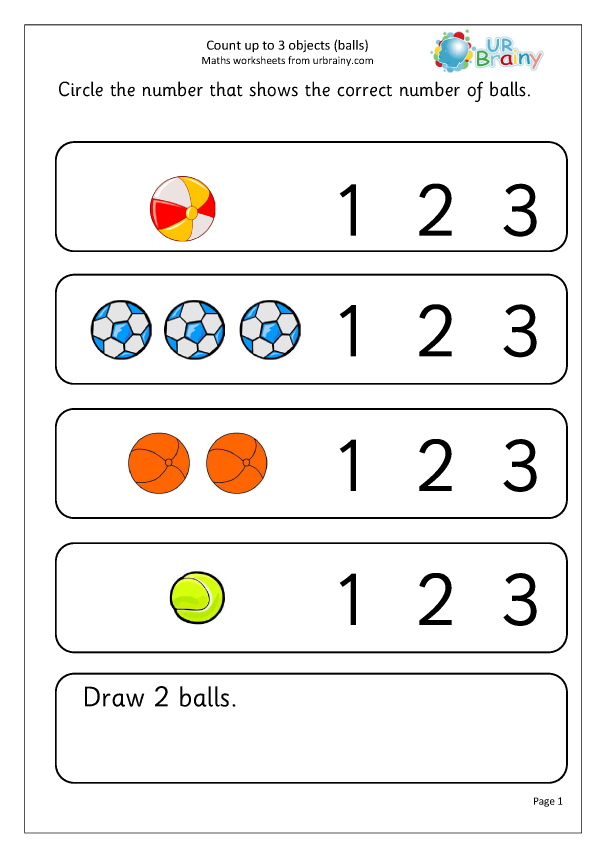
All numbers start at the top. This is easy to remember. With the Handwriting Without Tears approach, we have a song, “Where Do You Start Your Letters.” Well, one of the verses of that song goes, “Where do you start your numbers? At the top!” Yes! All numbers start at the top.
If you are not familiar with our song, you can find it on our albums, our workbooks, on our website, and as part of our Interactive Teaching Tools. The kids really love this song. We have a short version and a longer version that really gets the kids moving as they learn about start, top, and bottom. The song even teaches them how to “shake it in the middle,” which is so much fun for little kids. Please be sure to check it out. You will love this song, too!
3. Create Number Stories for Sequence
Consider how numbers are actually formed during the writing process.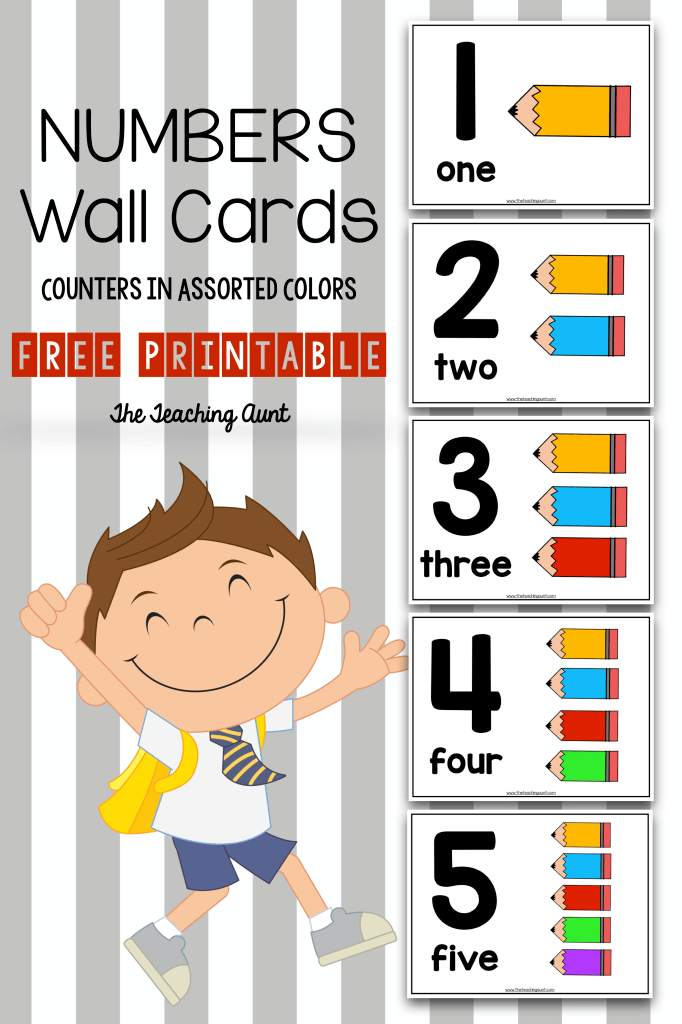 We refer to this as start and sequence. We now know that all numbers start at the top. But what happens next? We call this sequence.
We refer to this as start and sequence. We now know that all numbers start at the top. But what happens next? We call this sequence.
To help young children learn to write numbers, we have developed what we call Number Stories for each one. These are clever ways to help our young children remember the correct way to form their numbers. We use reference words about where the number will start, followed by sequence reference words to build the automaticity of forming the number.
These stories are found in our student and teacher books, on our website, and as a part of our Interactive Teaching Tools. Our number formation pages are free and can be found on our website. We even have them in Spanish!
4. Use Friendly Terminology
At Learning Without Tears, we use the terms Big Line, Little Line, Big Curve, and Little Curve.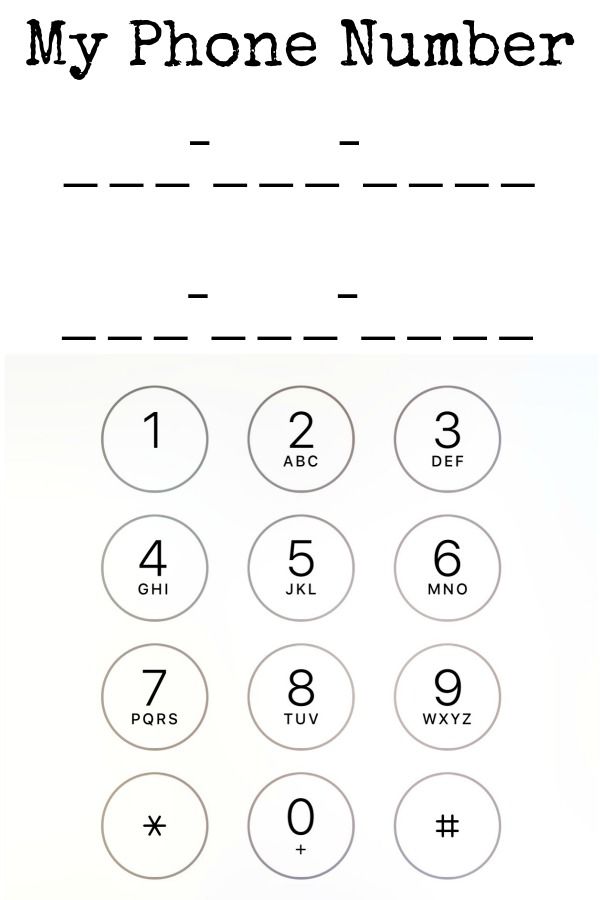 All of the numbers can be made with these four basic strokes or shapes.
All of the numbers can be made with these four basic strokes or shapes.
For our younger children, we build numbers using our Handwriting Without Tears Wood Pieces. As they progress and learn to hold a writing tool, we use small chalkboards and chalk to teach proper number formation. Then we introduce small crayons and Gray Blocks to provide a visual guideline for not only the formation of the number but for size and placement as well. Lastly, they will use a pencil and the Gray Blocks to produce numbers, eventually transitioning to a single baseline in their workbooks or on paper.
We even have an app for the iPad called Wet-Dry-Try to help teach, practice, and eventually master number formation. This is a great way to incorporate technology and add additional multisensory techniques to enhance learning opportunities for children. The Wet Dry Try app can also be used with capital and lowercase letters.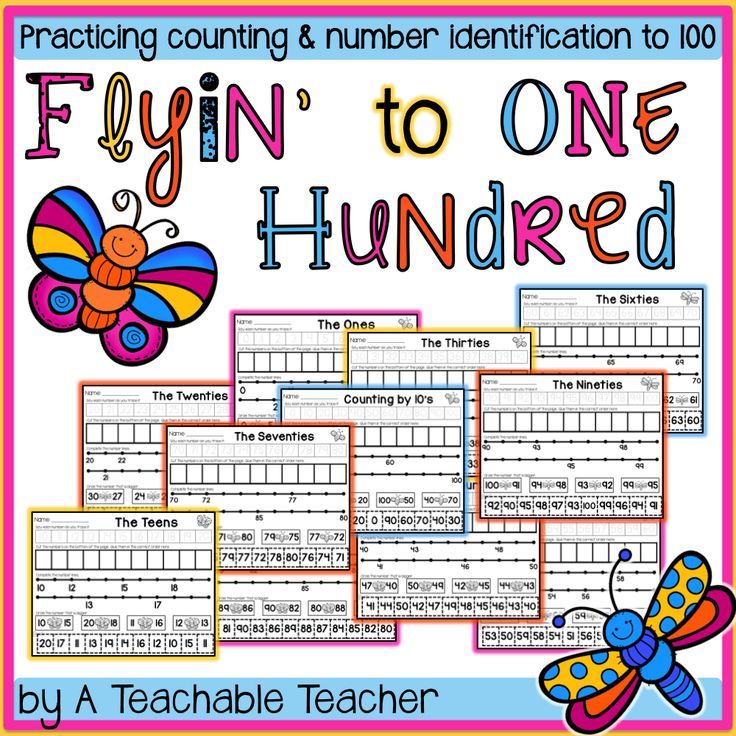
Check it out! Your children will really enjoy using this tool.
5. Teach Number Placement
The placement of numbers on paper is also something we need to teach and address during our summer number lessons. I have already mentioned some of our techniques and strategies previously.
All numbers are to be correctly placed on a single baseline. With young writers, we use the Slate Chalkboard to provide a strong visual and tactile representation of the baseline. This is also incorporated into the Wet-Dry-Try app for iPads.
When the children transition into a student workbook, they have a visual of the Gray Block to guide placement. The next step is to place the numbers, starting at the top, onto a single baseline.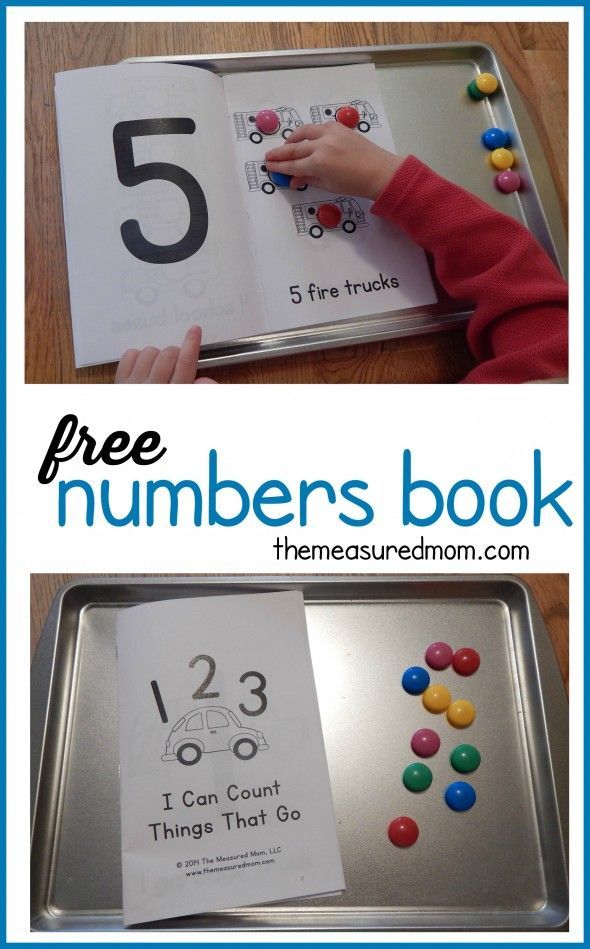 Eventually, on math papers, the student will not have a line to place numbers on. At this level, they will “see” the line in their minds and place the numbers on it. This takes a while and a great deal of practice for children to be able to do this. Until then, use chalkboards, tablets, Gray Blocks, and lines to teach and remediate the placement of numbers.
Eventually, on math papers, the student will not have a line to place numbers on. At this level, they will “see” the line in their minds and place the numbers on it. This takes a while and a great deal of practice for children to be able to do this. Until then, use chalkboards, tablets, Gray Blocks, and lines to teach and remediate the placement of numbers.
Learning Without Tears Can Help Teach Numbers!
Our goal at Learning Without Tears is to help provide trustworthy academic resources and products to parents and teachers to help prepare children for growth and success. We know that every child can be taught their numbers, but we want to make teaching numbers an engaging and worthwhile experience. As one of the first building blocks for mathematics and future learning, teaching numbers is a lesson that should be approached with references and support that we at Learning Without Tears are more than happy to provide.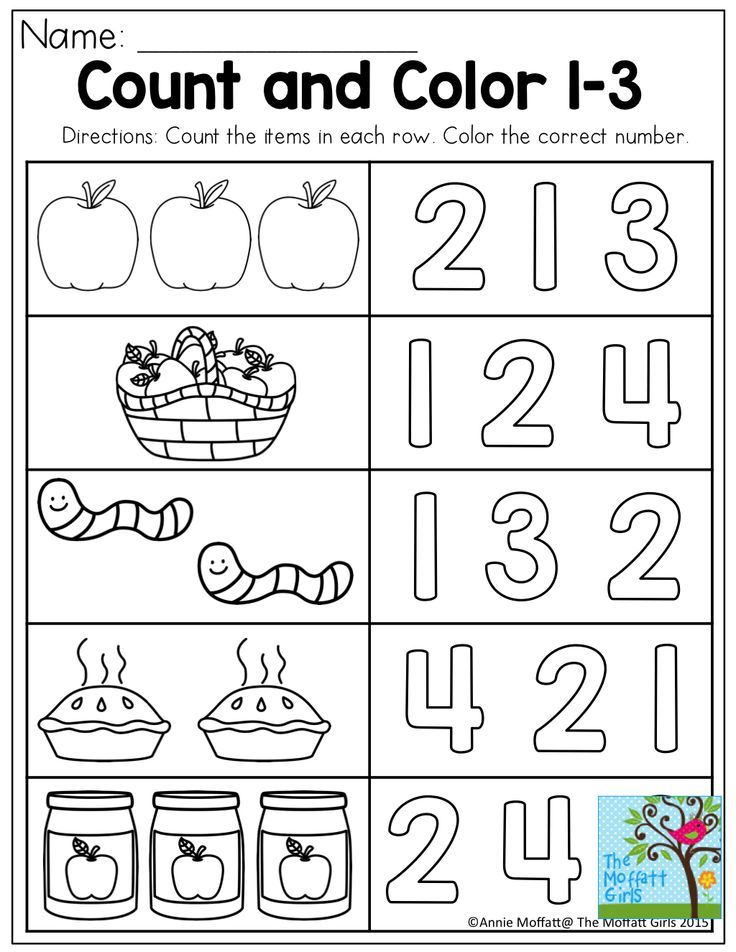
If you’re curious about the best way to learn how to teach numbers, Learning Without Tears has everything you need. We provide an extensive collection of educational products and resources that will have your child counting in no time. With a diverse selection of items to help students of all learning types, we’re confident that every child can benefit from the enriching teaching tools offered at Learning Without Tears. Explore our selection of free resources today to learn more!
Mathematics for kids. How to teach numbers? | Training
One and many
Before getting acquainted with the number 1, we practice the concepts of “one” and “many”. We pay attention to the number of items, denoting them with the terms "one and many".
When dressing a child, be sure to “count” the items of clothing: one hat, but many mittens. One dress, but many socks. We count products, toys, body parts, everything that occurs on a walk: there is one swing, there are many houses, there is one plate, there are many apples, etc.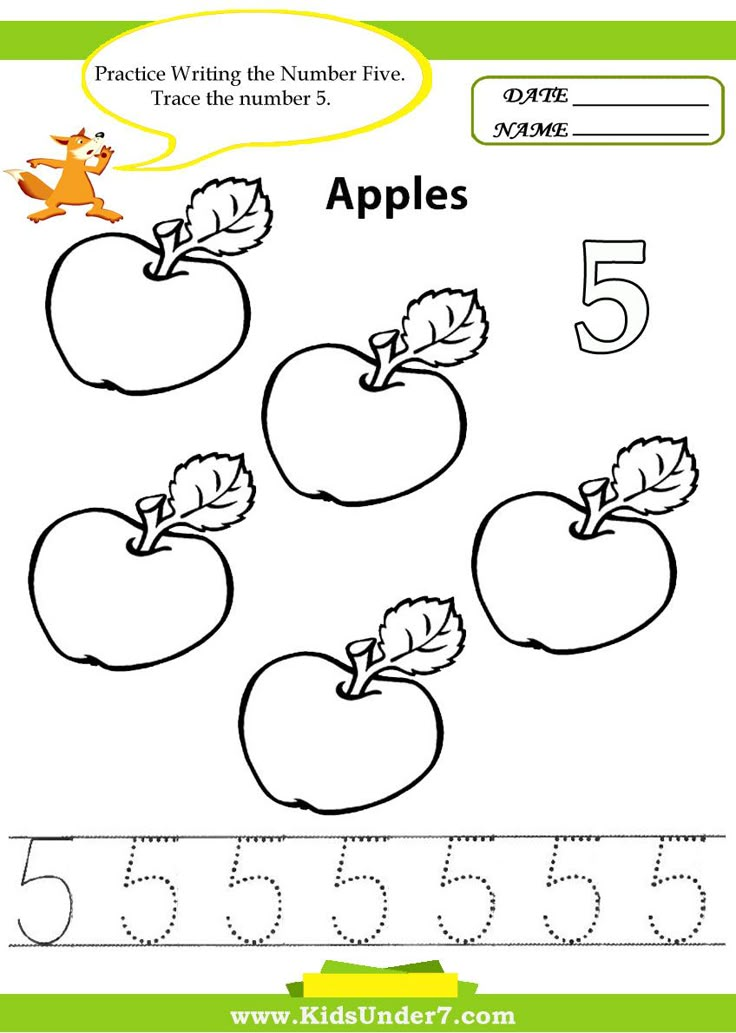 After the child learns to determine a single number of objects himself, you can introduce him to the number 1 ( do not forget about the difference between numbers and numbers, numbers are a record of a number).
After the child learns to determine a single number of objects himself, you can introduce him to the number 1 ( do not forget about the difference between numbers and numbers, numbers are a record of a number).
Here is one or one,
Very thin as a needle.
(S. Ya. Marshak)
If you have introduced the baby to a number, it is useful to determine the ratio of the quantity and the number entry.
Game "Find the place of the number". Toys are laid out in front of the child, among which there must be a single object (for example, several cubes and one doll). The kid is offered to find a place for one.
Away game. Offer to help lay the table for the guests of the doll: lay out in front of each guest one plate, one cup, one apple, etc.
Photo: pixabay.com
Numbers from 1 to 5 this also means that arithmetic operations (addition, subtraction) are worked out on the basis of numbers from one to five. To work with this number series, it is useful to use not only toys and objects that surround the child, but also to prepare simple didactic (training) material.
Laying hen
From the moment I got acquainted with the numbers, a laying hen has appeared above my daughter's bed. Testicles appeared in the pocket of the nest every day - from 1 to 5. The daughter, waking up, checked how many testicles there were. So quite easily we mastered the count to 5.
On the other side of the testicle, you can draw, or you can, having made a pocket, insert a chicken. It's time for the chicks to be born. The hen had 5 testicles. One chick hatched, how many eggs are left? So easily, with testicles and chickens, we learned about the composition of the number.
Photo: pixabay.com
Magic tree
We draw a fairly large tree on paper, in which we make leaves-pockets.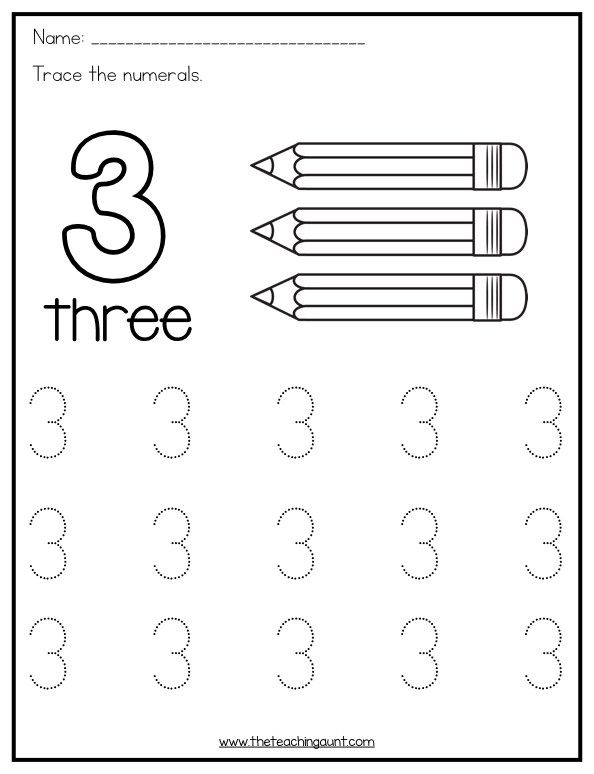 This is where we will insert yellow and red apples or pears. The tree will help us teach counting, master the simplest arithmetic operations.
This is where we will insert yellow and red apples or pears. The tree will help us teach counting, master the simplest arithmetic operations.
Basket with mushrooms
Cut out a large basket with a pocket. Now you can go for mushrooms or berries. Remember that in one basket there may be two types of mushrooms or berries. This is important for the child to understand the composition of the number (5 mushrooms are 2 chanterelles and 3 mushrooms).
Acquaintance with a new number
Each new number is entered by adding one to the previous one. You have one apple, I'll give you another one. You have two apples.
Similarly, they introduce 3, 4, 5… Adding (counting) to the previous one determines the place of the new number in the series.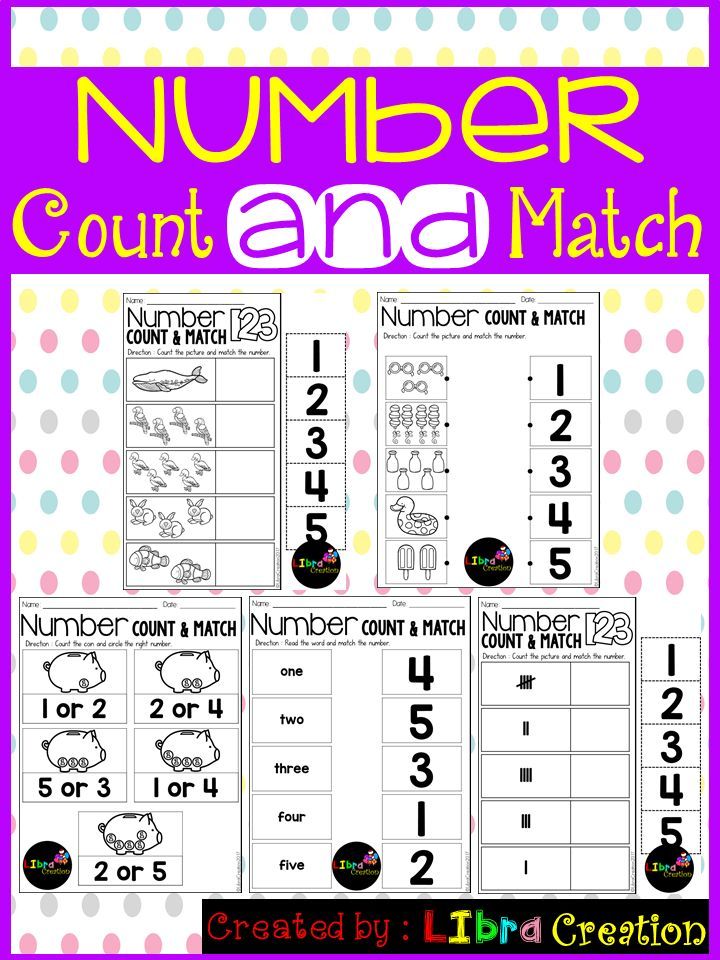 This is a very important condition both for explaining the meaning of a number and for the formation of ordinal counting skills.
This is a very important condition both for explaining the meaning of a number and for the formation of ordinal counting skills.
We work out the composition for each number. So: 2 is 1 and 1; 3 is 1 and 2, 2 and 1; 4 is 1 and 3, 2 and 2, 3 and 1; etc.
This is where we can come to the aid of the made didactic material, as well as toys, household items, multi-colored geometric figures cut out of cardboard, which it is time to introduce the child to. Arithmetic operations should be carried out only with the use of clarity.
- You have 3 mushrooms in your basket. You found another one. How many mushrooms are in the basket?
- There are 3 yellow apples and one red apple on the tree. How many apples are on the tree?
- There were 5 apples on the tree. One fell to the ground. How many apples are left on the tree?
Ratios
It is very important to teach your baby to correlate the number of objects. You can play the same game.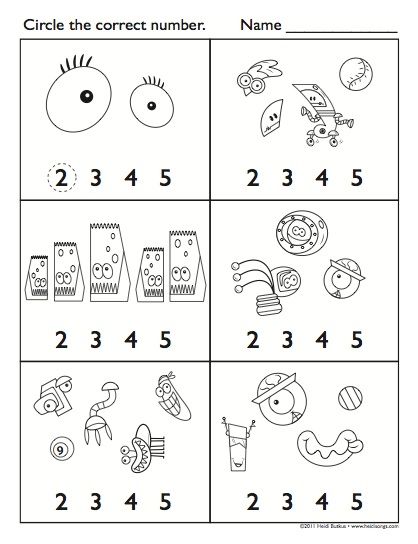
- Put as many apples as there are pears. How many apples did you put in? How many pears were there? There are as many apples as there are pears. Equal apples and pears.
- Let's build as many garages as you have cars. How many garages have we built? How many cars do you have? Cars and garages equally.
It is useful to lay out an unequal number of items. For example, 3 blue dice and 2 green dice. The child is asked if the number of blue and green cubes is the same? And what more? Next, the cubes are laid out in pairs, 1 blue remains. How many blues?
Games in motion
Mathematics can be learned while playing games. Do you know how to count up to three? Then you can include marches with teams (one-two-three), simple physical exercises.
- Handles raised - one, spread apart - two, lowered - three.
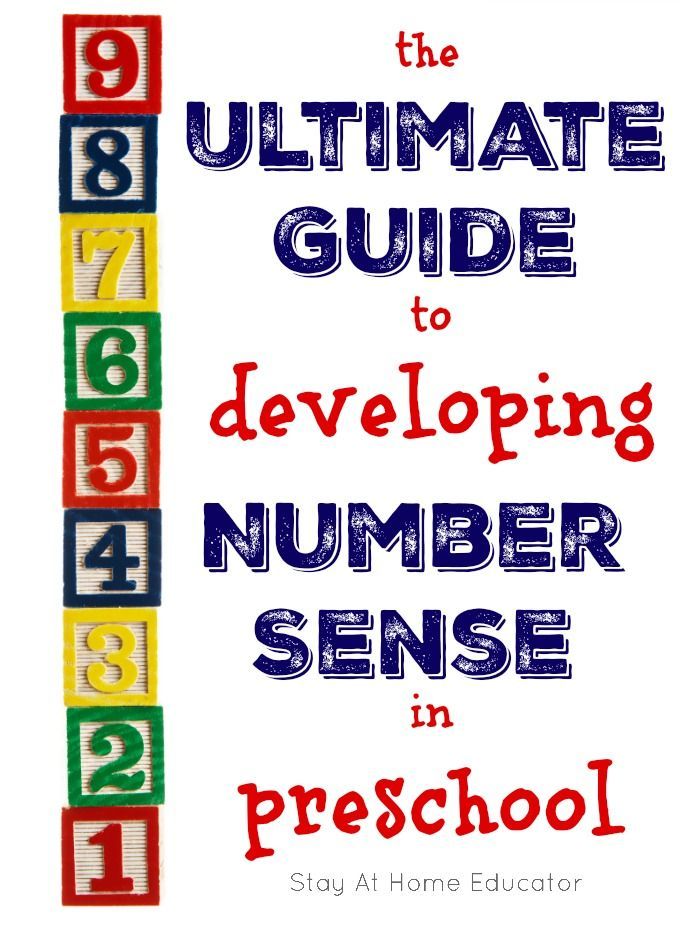
It is very good to play ball games. The dynamism of these games will bring knowledge to automatism. Throw the ball to the child, naming the number, let him name the next one. Later, you can complicate this game: let the baby name the previous one and the number between (3 and 5), etc.
Adventure games
Turn a child's room into a fairy forest . You can lay out images of trees, mushrooms on the floor. Invite him to go into the forest, giving commands: take 2 steps to the left. What tree grows here? We tear off the mushroom under the tree, put it in a basket. How many mushrooms are in the basket? Take 3 steps to the right, etc. We must pronounce the movements of the baby.
You can play in the river and islands . To do this, lay out sheets of paper with written numbers on the floor.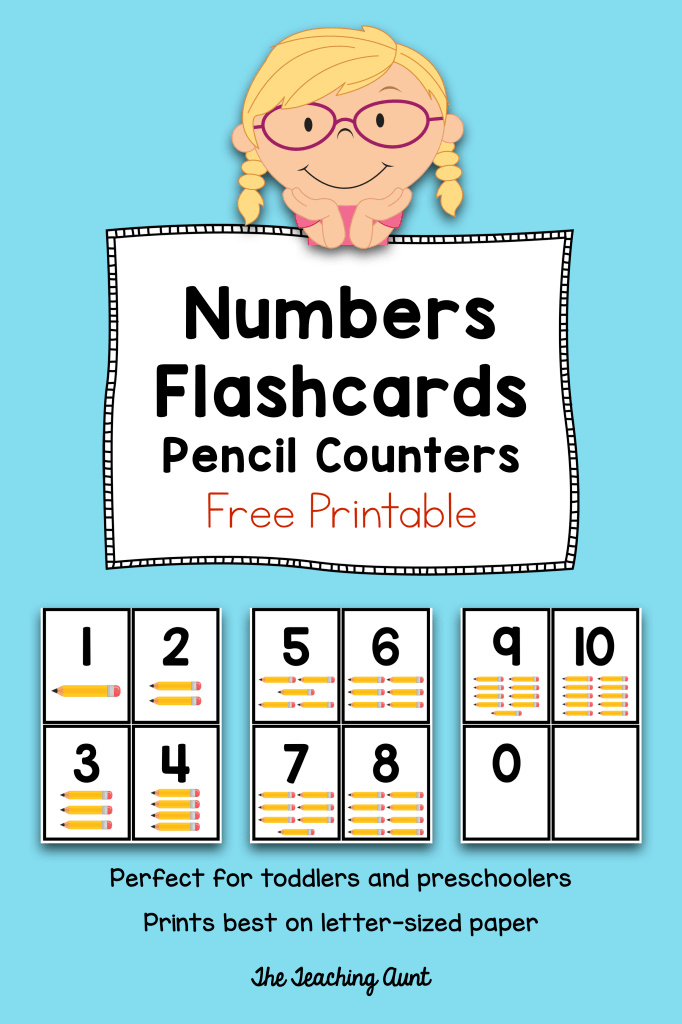 We tell the child that the room has turned into a river, and you can cross it along the islands. Ask the child to jump over the sheets strictly in the order of the numbers written down.
We tell the child that the room has turned into a river, and you can cross it along the islands. Ask the child to jump over the sheets strictly in the order of the numbers written down.
A more difficult version of teaching the baby using the 9 cube0020 . The kid moves to such a number of islands that fell out in the cube. This game is easy to make role-playing. Imagine that you and your baby are bunnies, and you need to get into your house. The one who gets to the house first wins.
Toddlers learn math easily on a walk . Count certain objects (trees, houses, animals, etc.) After reading the numbers, you can draw the child's attention to the numbers of cars, houses, signs containing numerical information.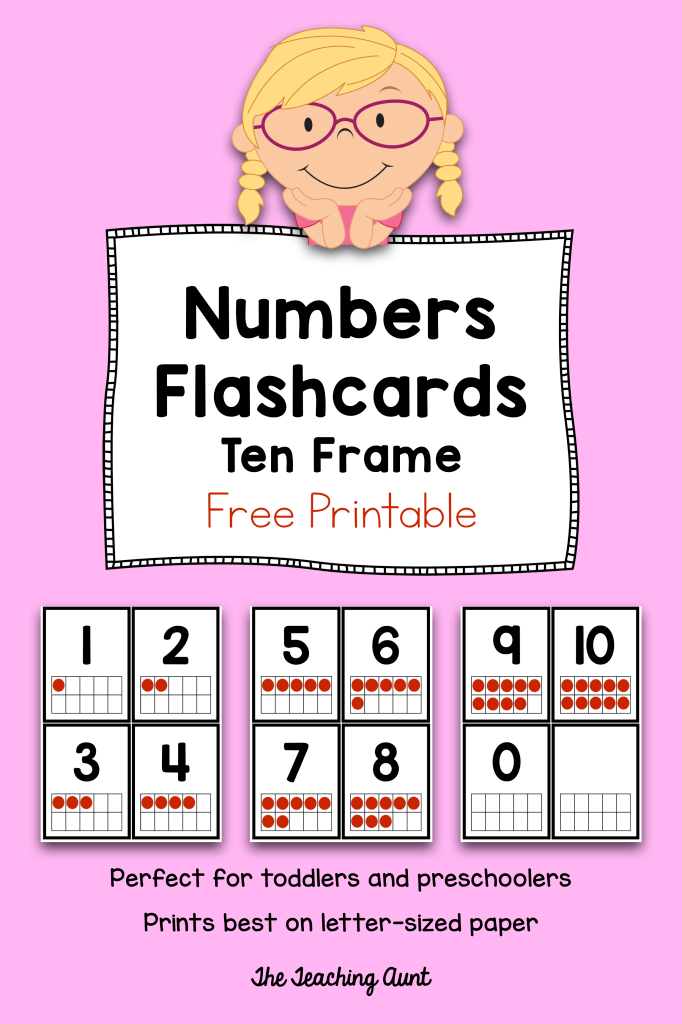
On a walk it is easy to draw the child's attention to the surrounding objects
Photo: pixabay.com
We conduct classes to develop the child's attention, eye.
- How many steps to the tree? Let's count.
- Look at this house carefully. Now turn away, and I will ask: “How many windows are in this house? And the doors? etc.
In winter it is very good to draw numbers in the snow. The baby has poorly developed small muscles, and he likes to draw large numbers with a twig.
It is good to count by ear, accompanying the count with the sound of a musical instrument. For example: count how many times I hit the drum, blew, knocked on the tambourine, etc. Such exercises not only help in learning to count, but also develop hearing.
Ordinal counting
Ordinal counting should be taught only when the child understands the meaning of the formation of a new number (by counting / adding one to the previous one).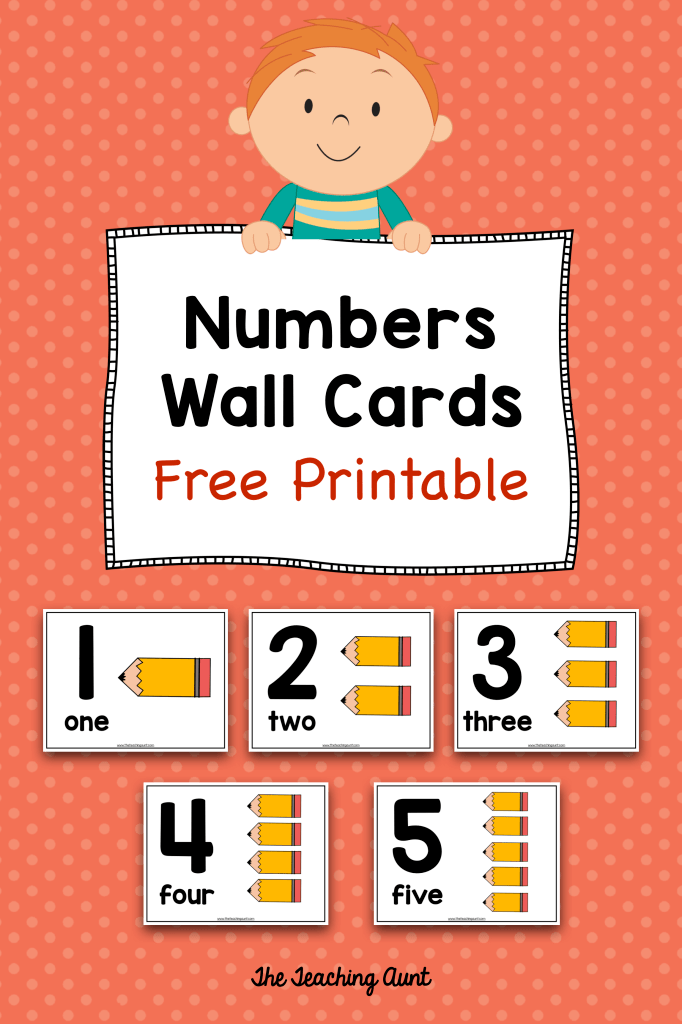 Many parents mistakenly believe that knowing how to count to, say, one hundred is enough to prepare for school.
Many parents mistakenly believe that knowing how to count to, say, one hundred is enough to prepare for school.
Photo: Depositphotos
It is important to teach kids both forward and backward counting, determining the place of a number in a row.
- Name the number before...
- Name the number after...
- Name the number between... . This approach develops the criticality of the baby.
You can lay out a series of numbers and "reverse" the two numbers. Later, the task can be made more difficult by swapping, say, the numbers "3" and "7" or three numbers at once.
It is useful to correlate the ordinal place of a number with the concepts of “less than” and “greater than”. Ask the kid: what number is greater than 5, but less than 7. Later we complicate the task: what numbers are greater than 2, but less than 9?
Remarkable material for the early study of ordinal counting is Russian folk tales.
 Let's remember Repka. Mathematics lessons according to this fairy tale can be carried out using the ordinal count:
Let's remember Repka. Mathematics lessons according to this fairy tale can be carried out using the ordinal count:
- Who came to the garden first? Who is second? What number did the cat come in?
Similarly, you can analyze the fairy tales "Gingerbread Man", "Teremok".
When working with fairy tales, it is convenient to use counting sticks. Let the kid lay out a stick with the advent of a new hero. Then, retelling the tale, he recalls the characters, pointing to the sticks.
To be continued…
Tags: maths, numbers, mathematics lessons, baby development, baby, baby education, learning to count
How to teach a child to count to 10, 20, 100
How to teach a child to count
Many children come to the first grade already with counting skills, so it is important for parents to teach them in advance.
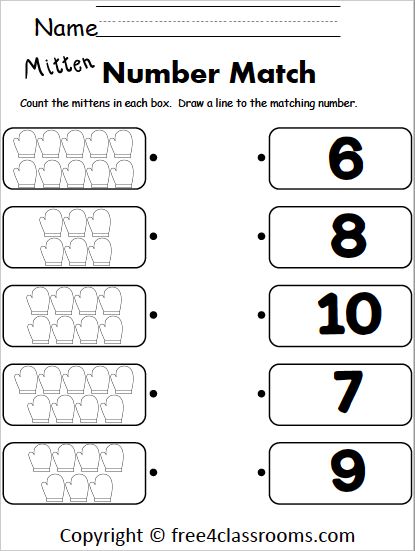 Today there are many techniques that make it interesting and fun.
Today there are many techniques that make it interesting and fun. Do not impose learning to count, it should be easy: in the course of daily activities or games. Count familiar objects together, gradually complicating the tasks. For example, he easily visualizes two oranges or four plates, but hardly abstract sets.
When to teach your child to count
Most experts believe that the best time to teach kids to count is 3-5 years. It is at this age that the child begins to be interested in new things and learns to establish patterns between numbers. However, everything is very individual. If the baby is actively exploring the world and is interested in mathematics earlier, you can start learning from the age of 1.5.
What methods to use to teach counting
We have collected proven methods that allow you to do this in a playful way that is interesting for the child.
- Finger counting . The technique helps to understand how to teach a child to count to ten.
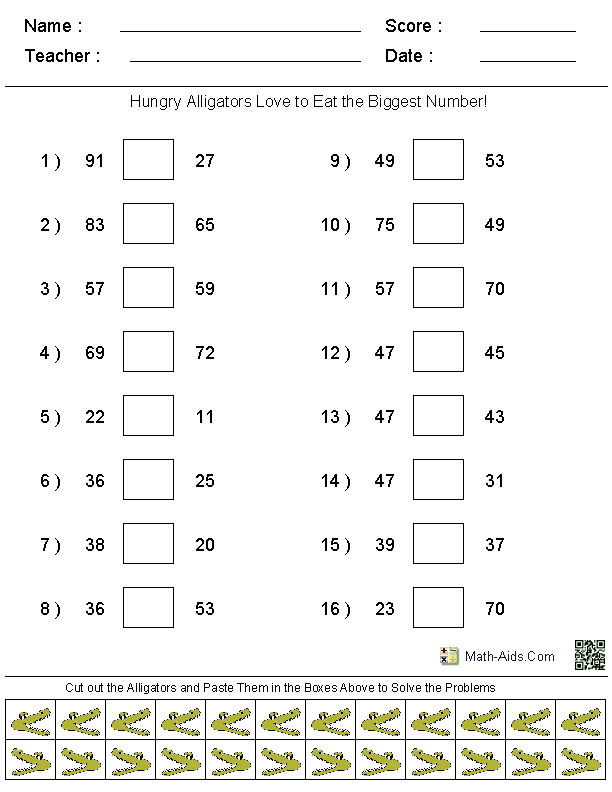 It will be difficult for a baby to remember all the numbers at once, so you can start with five and focus on the fingers of one hand. Introduce the child to their names, then connect the second hand. You can use finger games when one disappears or two or three fingers meet together.
It will be difficult for a baby to remember all the numbers at once, so you can start with five and focus on the fingers of one hand. Introduce the child to their names, then connect the second hand. You can use finger games when one disappears or two or three fingers meet together. - Use of training cards and sticks . You can lay them out one by one on the table and name the numbers, then move one part of the sticks to the right and the other to the left and ask how many sticks are in each part.
- Number games . Teaching children to count can take place in a playful way. For example, the role-playing game "shop". You need to choose who will be the seller and who will be the buyer, and assign a currency. Selling or buying sweets and toys, the child will easily remember the numbers up to ten and even up to twenty.
- Montessori method . It's like playing shop. You can give the child different coins, for example, a ruble, two, five, and ask him to calculate the amount or change money.
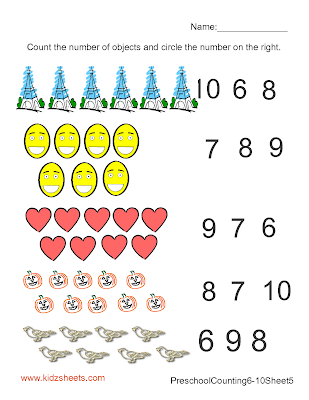
- Doman technique . The author recommends using cards with red dots for counting. The color will attract the baby's attention.
- Hundred Account Nikolai Zaitsev suggests immediately showing numbers from 0 to 99. So the child will understand how many tens and units each number makes.
- Polyakov's method . You will need cubes, a box with compartments according to the number of cubes and numbers. First, one cube is taken, placed in a cell and the number 1 is placed next. And so on up to 100.
How to teach a child to count to 20
To teach a child to count to 20, use two pairs of hands - yours and his own. You can also use cubes, cards, sticks or draw dashes - whatever comes to mind. Such an account is given as easily as up to 10.
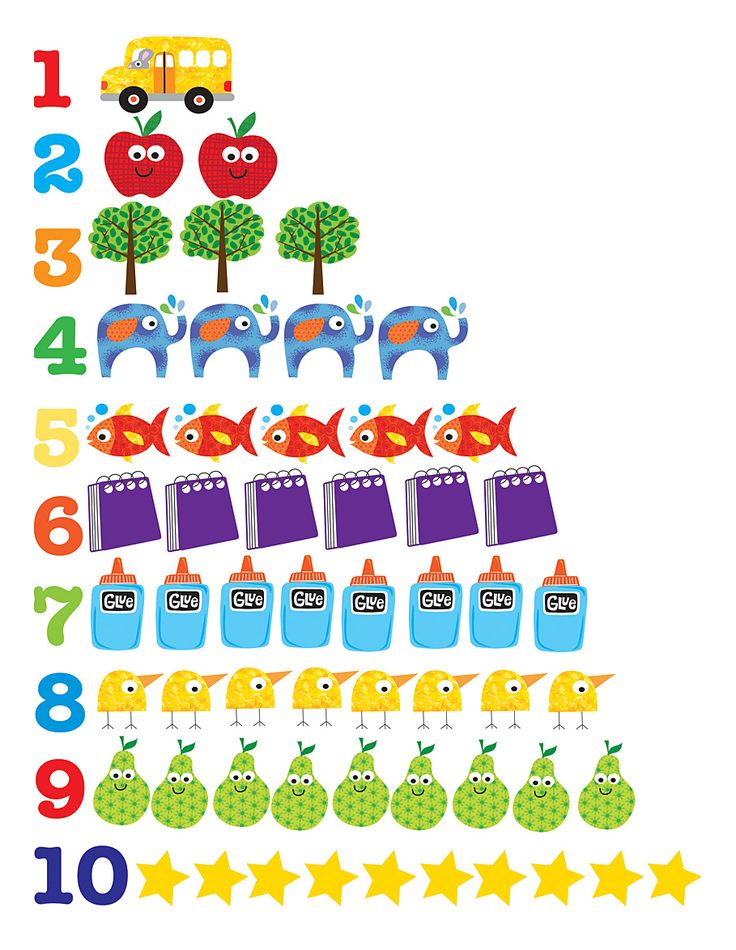 At this stage, the child needs to understand the composition of the number.
At this stage, the child needs to understand the composition of the number. <>
How to teach a child to count up to 100
Tell your child that there are only nine tens, then name each tens: ten, twenty, thirty, and so on. Invite him to memorize 10 new digits of each ten every day. At the end of the day, ask what the child remembers and repeat what they have learned on other days. To simplify repetition, you can count the objects that are in front of you. After the child has mastered the tens, invite him to play a game: write a series of numbers with tens and skip one number in the middle. Ask your child to complete the pass.
<
> You can also use Glen Doman's method. First, the child needs to be shown cards with no more than five dots, then increase their number to 20, 50, and then up to 100. This method will also help train visual memory.
It is important to draw the attention of the child to the numbers from 11 to 19, as they are called differently from the rest.
Source: freepik.com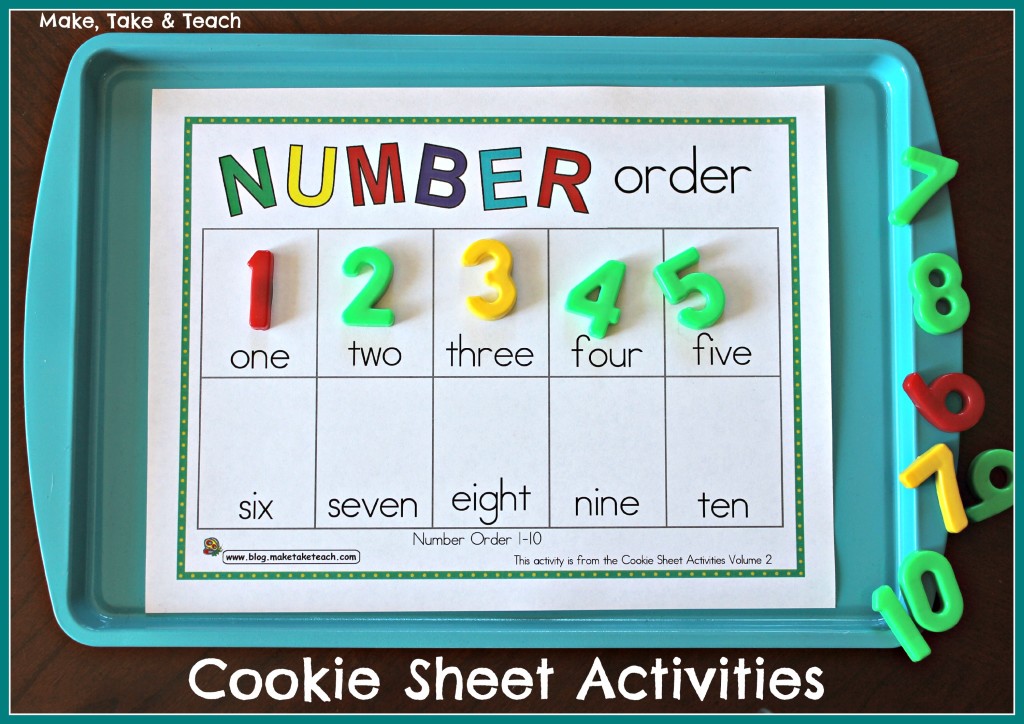
How to teach a child to add and subtract
To teach a child to solve examples, visualization is needed again. Bend and bend your fingers, remove and take out sweets.
Addition and subtraction are reciprocal operations. This connection needs to be conveyed to the child. That is, to demonstrate that 2+1 = 3 is the same as 3−1 = 2 and 3−2 = 1. If the child has mastered the principle, there will be no problems with other numbers.
To teach your child to add and subtract within 20, you need a number line. For example, 5+3. We find the number 3 on the beam and take five steps to the right. You can do the same with your fingers. So you can teach to count with the transition through a dozen and without.
Actions with the transition through ten have a peculiarity: you need to know the composition of the number and the pair of numbers that together form a ten (1 and 9, 2 and 8, 3 and 7, 4 and 6, 5 and 5).
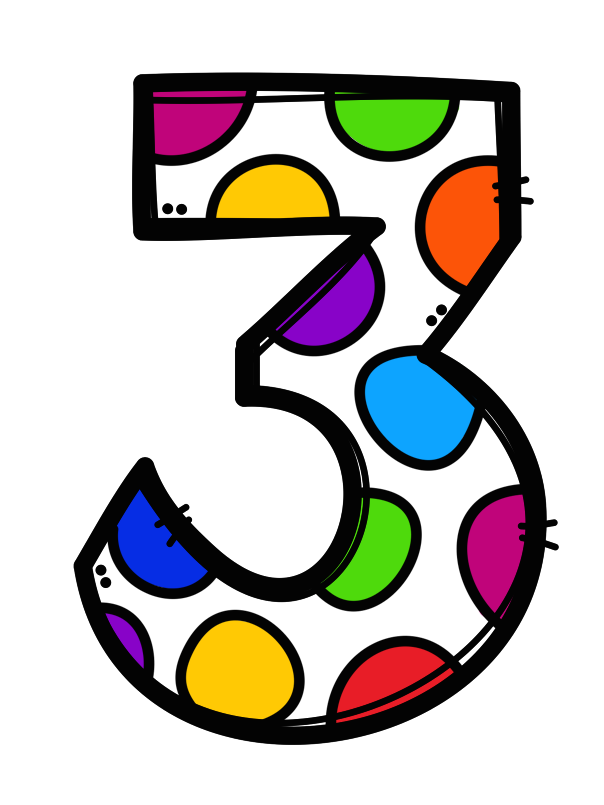 For example, 7+6. Seven to ten lacks three, that is, it turns out 7 + 3 + unknown. The six gave away three to ten, which means that there are still three left. Then it turns out: 7+3+3.
For example, 7+6. Seven to ten lacks three, that is, it turns out 7 + 3 + unknown. The six gave away three to ten, which means that there are still three left. Then it turns out: 7+3+3. How to teach a child to count in columns
Explain that in addition and subtraction, all actions are performed in digits: tens with tens, units with units. For example, 31 + 12: a three is added to a unit, a unit to a two.
To simplify, you can do training exercises - for example, write numbers under each other. Number 6 at the bottom, 12 at the top. It is important to explain to the child that six should be under the number 2, and not 1, as it refers to units.
Start with simple examples where digits add up to a number less than 10. Then you can move on to examples with a transition through ten: for example, 25 + 16. 5 + 6 add up to 11. Then we write the unit from 11 under the line, and we remember the unit as a ten. When we add the tens, we get 2 + 1 and another +1, which we kept in our heads.
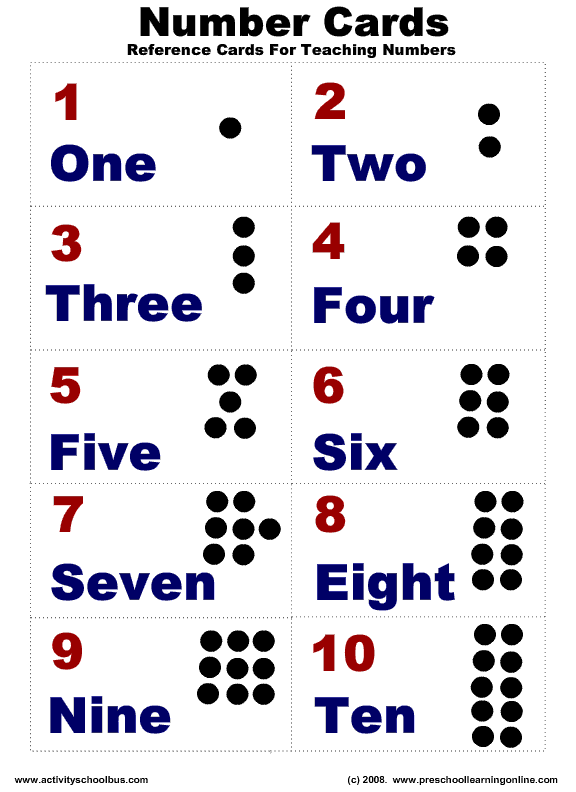
In the case of subtraction, you should also start with simple examples, gradually moving on to more complex ones. For example: 25-16, in the column where there are ones, 5 less than 6, explain to the child that in this case we kind of “borrow” a unit from tens.
For convenience, you can use the symbols that are marked in blue in the figure. In the first case, a ten is added, in the second, a dot serves as a reminder of a “busy” ten.
Counting games and exercises
Lego
Build towers with a certain number of blocks to teach your child to count. Later Lego will be needed in the development of fractions.
Fairy tales
Read to your child passages from fairy tales that contain numbers. He needs to clap as soon as he hears them.
Coloring pages with examples
You can teach your child to add and subtract through coloring pages, where an example is written in each cell, by solving which the child will recognize the color.
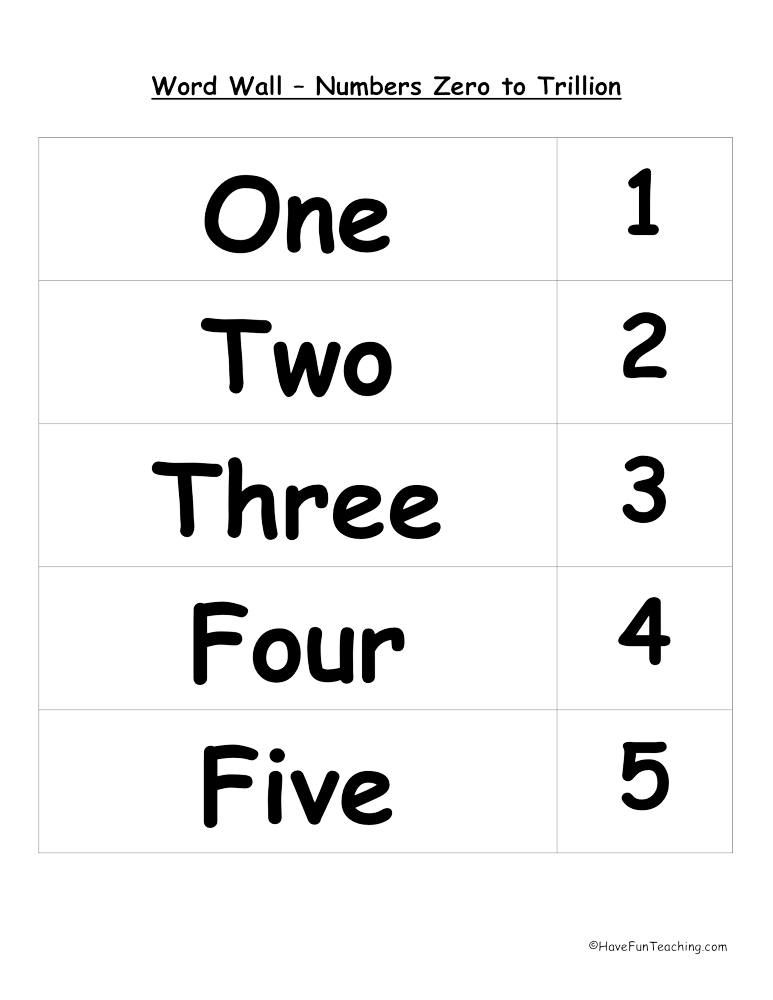
Board game "Strawberry paths"
There are two types of cards in the game: "Picking berries" and "Sharing berries". In the first case, you need to string a certain amount on your thread, and in the second, subtract, that is, give away. In the process, you need to count the berries and compare.
Strawberry Trails
Dominoes with numbers
The principle is the same as with pictures. One domino with two numbers around the edges is laid out by the child, the parent picks up a die with one of the numbers. The one who gets rid of the dominoes first wins.
<
